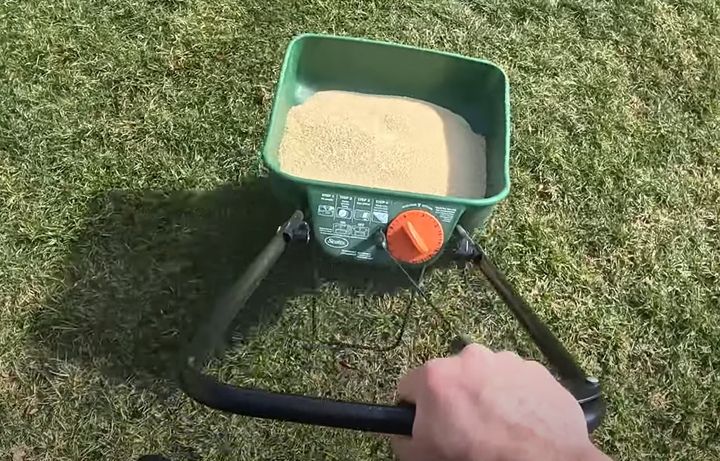Essential Spring Lawn Care Tips for Cool Season Grasses
Spring into action with our essential lawn care tips for cool-season grasses. From aeration to fertilization, learn everything you need to ensure your lawn stays lush and vibrant through the season.

Let's dive into the world of cool-season lawn care and make sure your grass is the envy of the neighborhood this spring.
Spring is a season of new beginnings, and for your lawn, it's no different. After the long, cold winter, your cool-season grass is ready to burst back to life with a bit of help from you. This guide is your go-to resource for waking up your lawn and setting it up for success throughout the growing season. From the importance of timely aeration to the art of perfect mowing, we've got you covered. Let's get started!
The Awakening: Understanding Your Cool-Season Grass
Cool-season grasses, like Kentucky bluegrass, perennial ryegrass, and fine fescue, thrive in the cooler temperatures of fall and spring. These grass types can struggle in the heat of summer, making spring care critical for establishing a resilient lawn that can withstand the challenges ahead.
Step 1: Cleanup and Inspection
Begin with a gentle cleanup. Remove any debris, leaves, and branches that have accumulated over the winter. This not only tidies up your lawn but also prevents disease and pest problems by eliminating their potential homes. Inspect your lawn for signs of damage or disease and take note of any areas that may need extra attention.
Step 2: The Right Way to Fertilize
Fertilization is crucial in spring to give your lawn the nutrients it needs to grow thick and lush. However, timing and moderation are key. Apply a slow-release nitrogen fertilizer in mid to late spring (avoiding early spring to prevent a rapid growth spurt that can weaken grass). Consider a soil test to tailor your fertilization strategy to your lawn's specific needs, ensuring you provide the right nutrients in the right amounts. Some choose do perform some micro dose fertilization applications earlier in the spring and carry that throughout the spring season.
Step 3: Overcoming Weeds: Pre-emergent Herbicides
Weeds are more than just a nuisance; they're competitors. Applying a pre-emergent herbicide in early spring can prevent common weeds from taking root in your lawn. This preemptive strike keeps your lawn looking pristine and reduces the need for more aggressive weed control measures later on.
Step 4: Mowing: Height Matters
As the growing season kicks into gear, so does mowing. Mowing at the right height is crucial for cool-season grasses. Aim to keep your grass at about 2.5 to 3 inches tall and ultimately 3-4 inches tall when you are moving into summer. Mowing too short can stress your grass, making it more susceptible to disease and weeds. Ensure your mower blades are sharp for clean cuts that promote healthy growth.
Step 5: Watering
Consistent, deep watering encourages deep root growth, which is essential for drought resistance. Aim for about 1 inch of water per week, whether from rainfall or irrigation. Early morning is the best time to water, reducing evaporation and the risk of disease. Water no more then 3-4 times per week with a ideal schedule deep watering every two days. This has to be adjusted depending upon the weather and your soil conditions.
Step 6: Patching and Overseeding
Spring is not the ideal time to overseed any bare or thin spots in your lawn. I tend to do all of my seeding in the fall. If you must seed in the spring, do not use standard pre-emergents / herbicides as they will prevent the seed from growing. Overseeding not only improves your lawn's appearance but also increases its density, helping it resist pests and weeds. Choose a seed mix that matches your existing lawn and consider top-dressing with compost to provide a nutrient-rich environment for seed growth.
Final Thoughts: Consistency is Key
Spring lawn care sets the stage for a year of lush, vibrant growth, but consistency is crucial. Regular monitoring and maintenance, from mowing to watering, play a significant role in your lawn's health and appearance. With the right care, your cool-season grass will not only survive but thrive, offering a beautiful, green oasis for you to enjoy.
Remember, every lawn is unique. Factors like local climate, soil type, and grass species can influence your lawn care strategy. Tailor these tips to fit your specific situation, and keep detailed logs of what you have done over the years to your lawn for reference.
Your lawn is more than just a patch of grass—it's a reflection of your home and the care you put into it. By following these essential spring lawn care tips, you're not just maintaining your lawn; you're investing in the beauty and value of your entire home. Happy mowing!


Comments ()